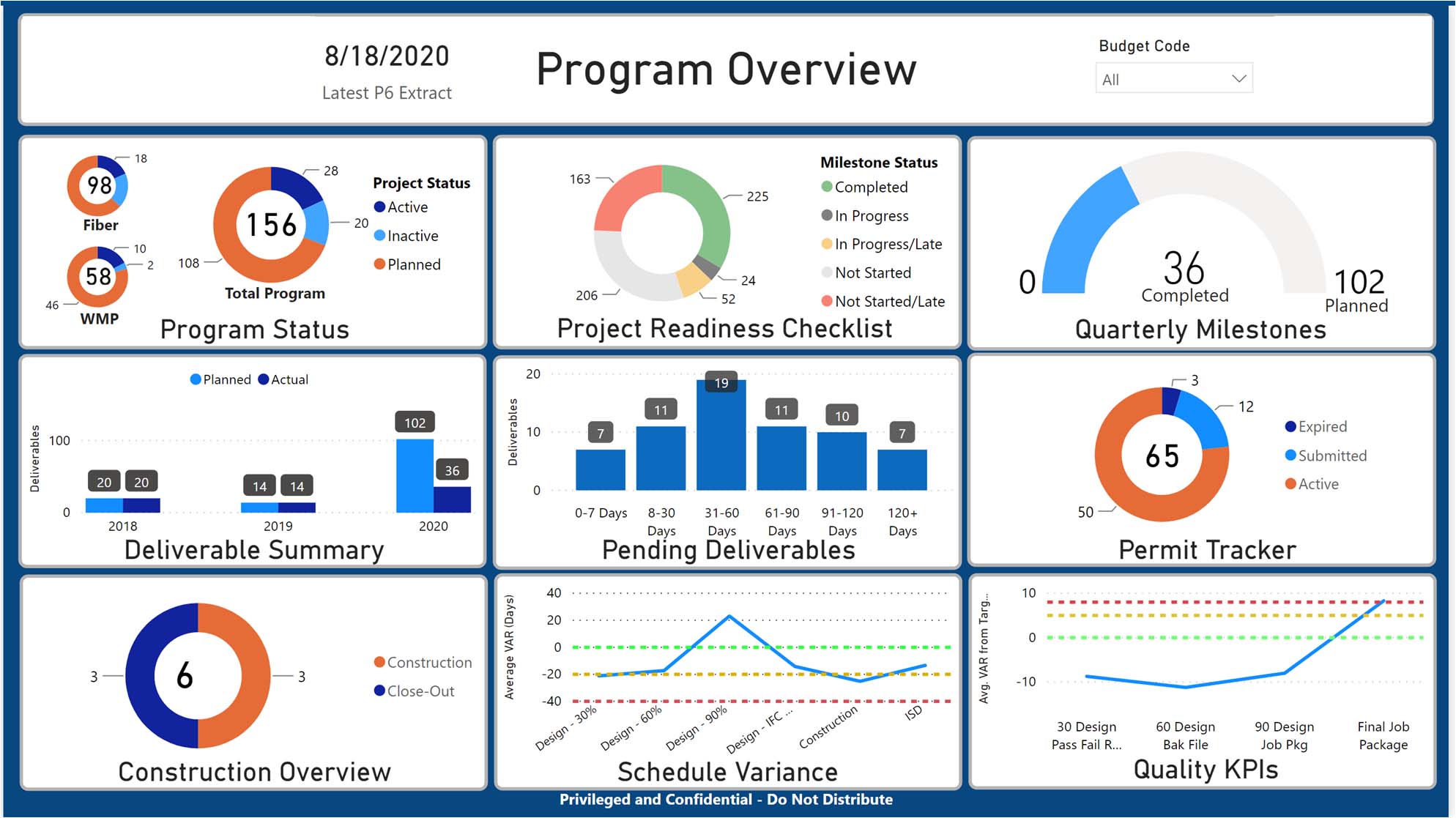For this effort, multiple groups played a role in making the fiber build dashboard development a success.
It was vital for the project team to play an active role in providing descriptions of the types of information to display. This included defining the underlying business processes and identifying sources for the data.
Once the technology team analyzed the sources, it also needed help from the project team to clean up any nonconforming data and to provide any data that was not yet captured. Though this can take significant time and commitment from the project team, it is crucial to the long-term success of the initiative.
As these dashboards take shape and begin to mature, the process is only beginning. As dynamic data tools, it is very important for the project team to utilize the dashboards in daily activities — identifying additional needs and uncovering any data issues.
The technology team also must functionally understand what is being delivered by the project team and how these metrics help the program to run efficiently. In some cases, the technology group may submit requests that are tedious and become time-consuming for the project team to define. Communication between the technology and project teams in these instances is critical. It is essential that the technology team have a clear understanding of project details. This can help the project team greatly. For example, it is often helpful to provide verbal or written examples to confirm understanding of what the technology team really needs to deliver the content. A true team effort requires clear and consistent communication to be successful and avoid needless friction that can result in wasted effort.
Having stakeholder engagement from initiation to launch is also critical to success.
In this program, training sessions were scheduled for launch with each different stakeholder group. All had the opportunity to walk through the new dashboards. This resulted in better acceptance and adoption of the new feature, fewer data enhancement requests, and higher stakeholder engagement.
This dashboard solution is dynamic and ongoing, requiring some enhancements and maintenance for continuing support. This support includes:
- Proving costs associated with utilizing the tool sets.
- Responding to requests to tweak the dashboards and tool sets.
- Managing changes to the system as source tools are modified.
- Providing general maintenance of the underlying systems.
The costs associated with tool sets and general maintenance are covered by a set fee that includes an agreed-upon amount for support. Any requests for major enhancements or new functionality are typically addressed via contract change order.
Any dashboarding project requires close collaboration among all stakeholders — including the customer — for ultimate success. These tools are true examples of technology breakthroughs, enabling members of the project team to make the dashboards part of their daily lives, driving efficiencies and offering full transparency for stakeholders.
It takes effort from multiple disciplines to focus resources to deliver outcomes that utilities are coming to greatly appreciate as they work to meet their ever-evolving mandates for system resilience and reliability.




